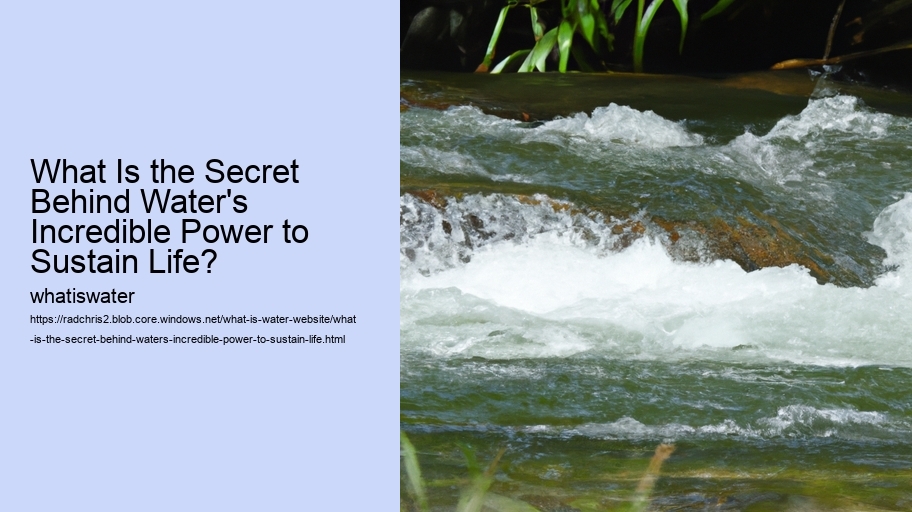Firstly, water's polarity grants it an unparalleled ability to dissolve substances.
What Is the Secret Behind Water's Incredible Power to Sustain Life? - Drinking Water
- Floods
- Hydration and Health
- Thermal Pollution
- Water Education
Surface Water Secondly, water has high specific heat capacity and surface tension due to hydrogen bonding between molecules. These bonds require significant energy to break, which means that water can absorb substantial heat without drastically increasing in temperature. This thermal stability ensures moderate climates on Earth and helps living organisms maintain their internal temperatures within viable limits.
Thirdly, the anomalous expansion upon freezing is another remarkable trait of water. Unlike most substances that contract when they solidify, water expands due to its hydrogen bonds forming a crystalline structure less dense than liquid water.
What Is the Secret Behind Water's Incredible Power to Sustain Life? - Water Footprint
- Drinking Water
- Water Conflict
- Molecule
- Floods
Moreover, transpiration cycles powered by evaporation and precipitation play critical roles in distributing fresh water across continents—a necessity for terrestrial life forms. Water evaporates from surfaces like oceans or leaves using solar energy before condensing into clouds and returning as rain or snow—this cycle refreshes vital freshwater resources while also regulating planetary temperatures through latent heat transfer.
Lastly, the interaction between aqueous environments and sunlight fosters photosynthesis—the process whereby plants convert carbon dioxide and sunlight into glucose and oxygen—fundamental not only for plant growth but also as the base energy source for nearly all food webs on Earth.
In conclusion, the secret behind water's incredible power lies in its molecular structure enabling unique physical properties: solvency; thermal regulation; lower density as a solid; facilitation of weather patterns; support for biochemical reactions crucial for life itself.
What Is the Secret Behind Water's Incredible Power to Sustain Life? Water Conflict - Water Conflict
- Waterborne Diseases
- Drinking Water
- Water Conflict
- Molecule
- Floods
- Hydration and Health
What Is the Secret Behind Water's Incredible Power to Sustain Life? - Drinking Water
- Water Conservation
- Waterborne Diseases
- Drinking Water
- Water Conflict
